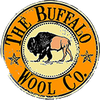In search for the prairie burrow owls at Caprock Canyon state park
One of our favorite places:
Just south of the Herdwear Store in Goodnight, is the town of Quitaque, and the entrance to the 3rd largest park in the state. T spent two days trying to capture images of the Burrowing Owls that live in holes in the prarie dirt.
This is the story of a woman, her camera and about 130 bison who wanted to watch.
(first owl she saw... and the little fence, which becomes more important to the story later on)

Burrowing owls are tiny... growing to just 10" at maximum... and they are elusive and shy. In order to catch a glimpse of them you have to be out early, find a little bit of cover and wait patiently. For more information on western burrow owls

It was early morning, no one around, about 3/4 mile from the truck,T had found a nice place to sit and watch the prairie come to life. Got this shot of an owl popping up to see the day.
It was about then that the bison noticed she was there, and came over to investigate. So, at this point, the pics very quickly became more about the bison. Not wanting to becoming a story like the we hear about at Yellowstone park, she could only see one place to go that fence she saw first thing this morning with that owl on it. Here is a little video of them coming up and checking her out.
"Here they come" the first one is them at a distance, wandering their way towards her. Since her 600mm lens was kinda too long to capture much, she switched to her phone and did some selfies :)


"Me dancing around the fence as they are too close to use my camera lenses"


good looking guy and a pretty shot of the canyon... 
shot from behind the little fence...

I stopped counting at 130 in this herd of bison and waited for two hours for them to move on past me. What an amazing two hours that was!
a bit about the herd...Texas State Bison Herd: An Epic Journey, from Near Extinction to Celebration

There is perhaps no greater symbol of the American West than the American buffalo, or more correctly, bison. The largest land animal in North America, it has endured as an icon of our heritage, spirit and culture. Its very existence has been an instrumental link to our past—both good and bad—and efforts to restore these magnificent animals are also representative of an optimistic future. Once threatened to the brink of extinction, bison are doing quite well today. Thanks to private-government partnerships, herds can now be seen in many states and number in the tens of thousands.
Yet, the majestic Southern Plains Bison remains an even more unique story. Legendary rancher Charles Goodnight started the remnants of the herd on his JA Ranch in the Texas Panhandle in 1878, in attempts to save the animals that had meant so much to him. It was actually his wife that influenced the cattle and business tycoon to preserve them, before they disappeared, so that future generations might be able to see and appreciate these special creatures.
Somehow, against the odds, a herd of genetic-related Southern bison have managed to survive the decades since, and now, we all benefit from the Goodnights' vision. When the bison were initially donated to Texas Parks and Wildlife Department (TPWD) and moved to Caprock Canyons State Park in 1997, it was discovered that their DNA was different, and feature genetics that are not shared by any other bison in North America. In fact, the Official Texas State Bison Herd at Caprock represents the last remaining examples of the Southern Plains variety.
From Texas Parks and Wildlife @ Texas.gov



Thank you for the great article And pictures on the Texas Bison. We were in SD in August and spent some time with three different herds. Amazing creatures!
Leave a comment